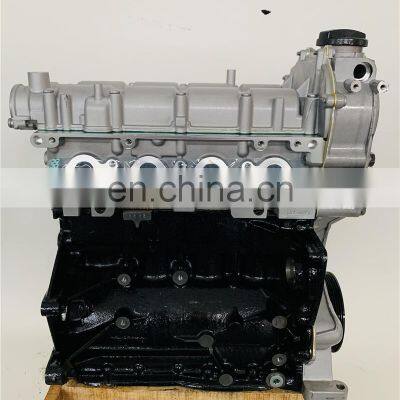Reduce downtime by using a well-maintained clp engine.
Reduce downtime by using a well-maintained clp engine.
Blog Article
How a Clp Engine Can Boost Effectiveness in Various Industries
The advent of CLP engines notes a considerable shift in functional efficiency across numerous markets, driven by their ability to optimize gas usage and minimize downtime. Industries such as production and logistics stand to get significantly from their robust layout and constant power output, which assure to improve procedures and enhance productivity. As organizations significantly prioritize sustainability alongside performance, the role of CLP engines comes to be even much more important. What remains to be seen is just how these innovations will form the future landscape of industrial procedures and their effect on broader financial fads (clp engine).
Summary of CLP Engines
CLP engines, or Continuous Fluid Propellant engines, stand for a considerable improvement in propulsion innovation, especially for space applications. These engines utilize a continual feed system that permits the sustained expulsion of propellant, resulting in enhanced efficiency and efficiency contrasted to conventional solid or hybrid propulsion systems. By maintaining a constant circulation of fluid propellant, CLP engines can accomplish extra precise drive control, which is vital for maneuvering spacecraft in numerous goal scenarios.
The layout of CLP engines integrates advanced products and innovative gas administration systems. clp engine. This results in lowered weight and boosted reliability, crucial variables for long-duration area missions. In addition, the constant operation decreases the danger of combustion instability, a common obstacle in traditional rocket engines.

Advantages in Manufacturing
The manufacturing of Constant Fluid Propellant (CLP) engines offers a number of remarkable benefits that enhance both effectiveness and cost-effectiveness. Among the key advantages is the streamlined production process, which minimizes the intricacy connected with traditional propulsion systems. By utilizing liquid propellant, manufacturers can accomplish higher precision in engine performance, causing enhanced power output and reduced waste.
Additionally, CLP engines facilitate a higher level of modularity, enabling less complicated assimilation into various production lines. This flexibility can dramatically lower lead times and enhance overall functional adaptability. Using CLP modern technology likewise tends to reduce the need for substantial maintenance because of less relocating parts, which converts right into reduced downtime and functional expenses.

Applications in Logistics
Leveraging Continuous Liquid Propellant (CLP) engines in logistics provides considerable advantages in operational effectiveness and dependability. These engines supply a durable remedy for numerous transport demands, making it possible for the seamless movement of goods across large distances. The inherent design of CLP engines enables consistent power outcome, which equates right into smoother and extra foreseeable transport routines.
Among the crucial applications of CLP engines in logistics remains in sturdy products transportation, where they can drive both ground and aerial cars. Their capacity to keep high performance under varying tons problems makes certain that distribution timelines are met, therefore enhancing customer satisfaction. In addition, CLP engines can be incorporated into automated logistics systems, facilitating real-time tracking and maximizing route preparation.
Moreover, the longevity of CLP engines reduces upkeep downtime, permitting logistics business to optimize their functional capacities. This is specifically helpful in warehousing operations, where efficiency in handling and transferring items is important. As logistics proceeds to advance, the assimilation of CLP engines represents a forward-thinking approach that not only enhances efficiency yet likewise sustains the market's expanding needs for integrity and rate.
Impact on Energy Efficiency
Exactly How do Continual Fluid Propellant (CLP) engines boost energy effectiveness in transport? CLP engines use a constant flow of liquid fuel, maximizing burning procedures and preserving a steady thrust outcome. This design minimizes power losses connected with standard burning engines, where gas delivery can vary and cause inefficiencies.
The constant procedure of CLP engines permits a much more reliable thermal cycle, resulting in greater Visit This Link specific impulse compared to standard engines. clp engine. This translates to decreased gas intake for the same amount of work done, dramatically decreasing functional prices across various transportation industries, including aviation and maritime try this site markets
In addition, the capacity of CLP engines to keep optimal performance under varying load conditions reduces the need for frequent acceleration and deceleration, further enhancing fuel efficiency. Improved energy efficiency not just adds to set you back financial savings yet additionally brings about decrease greenhouse gas exhausts, straightening with international sustainability objectives.
Future Trends and Innovations
Emerging developments in Constant Liquid Propellant (CLP) engine technology promise to revolutionize the landscape of transportation performance and sustainability. As industries pivot toward greener choices, CLP engines stand at the center, integrating innovative materials and layout methods that improve performance while minimizing ecological influence.
One of the most encouraging patterns is the adoption of crossbreed systems that incorporate CLP engines with sustainable energy resources. This harmony can optimize gas usage and decrease exhausts, lining up with global sustainability objectives. Additionally, developments in computational fluid characteristics (CFD) are assisting in the design of even more aerodynamically effective engines, resulting in reduced drag and enhanced fuel performance.
In addition, the development of clever tracking systems is set to boost operational performances. These systems take advantage of data analytics and IoT modern technology to maximize engine performance in real-time, guaranteeing that the engines operate within their most effective specifications.
As study proceeds to explore different propellant solutions-- such as biofuels and artificial gas-- the future of CLP engines looks encouraging. By taking advantage of these innovations, sectors can not only boost their efficiency yet also add dramatically to a cleaner, much more lasting future in transportation.
Conclusion
In verdict, CLP engines stand for a substantial development in effectiveness throughout several sectors. The assimilation of innovative products and fewer relocating components decreases upkeep needs, while alignment with sustainability objectives positions CLP engines as a critical technology for the future.
Report this page